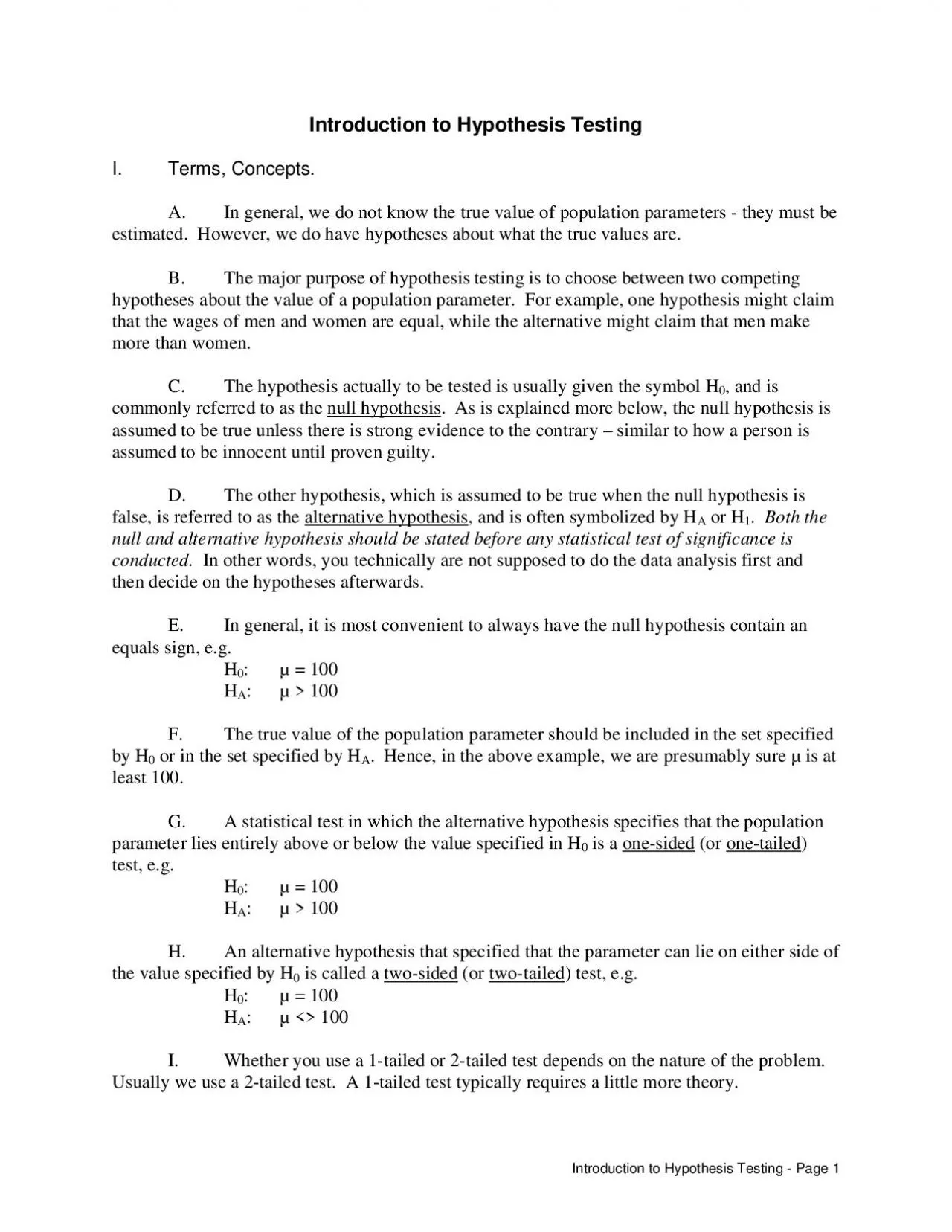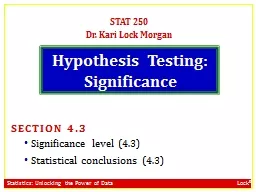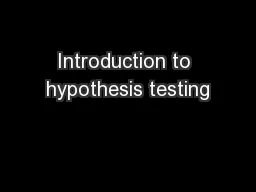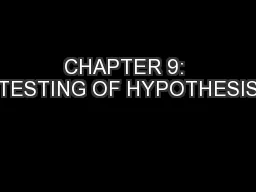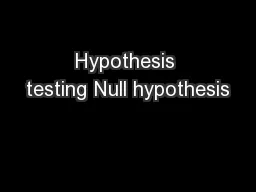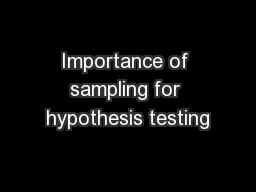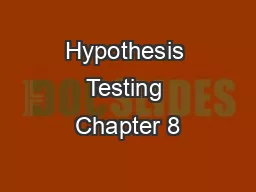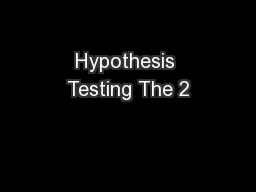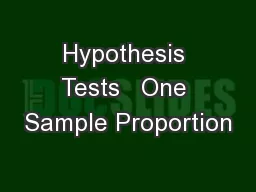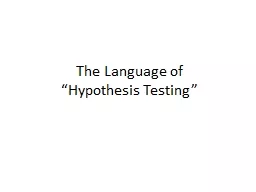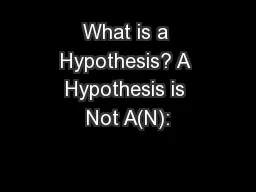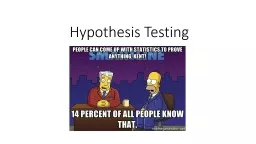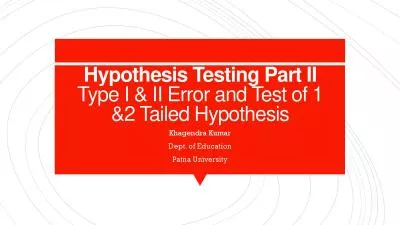PDF-Introduction to Hypothesis Testing
Author : jovita | Published Date : 2022-09-08
I Terms Concepts A In general we do not know the true value of population parameters they must be estimated However we do have hypotheses about what the true values
Presentation Embed Code
Download Presentation
Download Presentation The PPT/PDF document "Introduction to Hypothesis Testing" is the property of its rightful owner. Permission is granted to download and print the materials on this website for personal, non-commercial use only, and to display it on your personal computer provided you do not modify the materials and that you retain all copyright notices contained in the materials. By downloading content from our website, you accept the terms of this agreement.
Introduction to Hypothesis Testing: Transcript
Download Rules Of Document
"Introduction to Hypothesis Testing"The content belongs to its owner. You may download and print it for personal use, without modification, and keep all copyright notices. By downloading, you agree to these terms.
Related Documents

